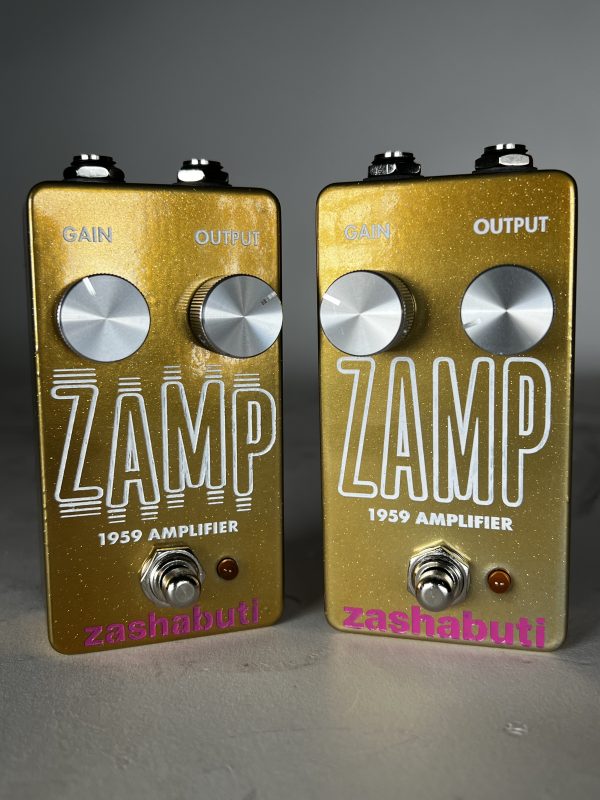ZAMP DEEP SPECS
For scientific and super curious types:
ZAMP is a 1950s tube guitar amplifier using an audio chain of six individual circuit blocks.
Stage 1 is a low noise and low distortion input buffer with a 1M Ohm input impedance to be consistent with typical tube amplifier inputs. This is a critical point as it has a serious effect on the resonance of passive guitar electronics. The phenomenon generally referred to as “tone suck” by guitarists is often related to this resonance as opposed to simple filtering as an effect of loading. Passive guitar pickups form a complex impedance that causes unexpected effects with loading. Active pickups are not affected by loading in general and operate normally into the buffer. The 1M Ohm standard allows most passive guitar pickups to operate normally. Pickup loading for effect should be done from inside the guitar, not at the end of an in instrument cable.
Stage 2 and 3 are the 12AX7A and 12AX7B tube emulators. The two stages represent both halves of a 12AX7 working together to produce the harmonics and amplification of a typical late 1950’s amplifier front end. These stages also create the classic vintage tube amplifier “clean sweet spot” region which is the result of dynamic low order distortion cancellation that also creates the first stage contribution to the iconic “tube compression” effect so coveted by guitarists.
Stage 4 is an electronically logarithmic volume control that drives the stages that follow while giving a linear feel to the control from the user’s perspective. This stage also has the property of lowering the noise along with the audio level as opposed to passive volume controls that have a signal to noise ratio that degrades as the volume is lowered.
Stage 5 emulates 3 tubes; the 12AX7 (half) Cathodyne style polarity inverter (often wrongly called a “phase inverter”), and the two 6V6 output tubes forming the push-pull stage. The “drive” control is performing the function of the real tube amplifier’s “Volume” control to drive the output stages. This is a significant point regarding the ZAMP’s ability to have the feel of a real tube amplifier as volume increases.
Stage 6 is the second electronically logarithmic volume control that gives output level compensation as well as providing the line driver for the output jack. The output impedance is limited to 100 Ohms to provide stability when driving long cable runs. The output level range of the ZAMP is -infinity to +11 dbu. This is quite respectable for a 9 Volt powered device without the use of voltage conversion devices which can cause nightmares of cost, complexity, and noise.
POWER:
The ZAMP can be powered by an external 9 Volt power supply or an internal 9 Volt battery.
All of these sources feed a reverse polarity protection diode (Schottky) which feeds a precision 8 volt regulator. The regulator allows a range of 9 to 18 volt supplies to be used while maintaining consistent performance and low noise. When powered by a 9-volt battery the ZAMP will run for approximately 40 hours when using an Energizer 522 Alkaline 9 Volt battery. Non-Alkaline battery chemistry and/or lesser quality batteries can affect the run time significantly. The ZAMP will run at voltages down to about 4.5 Volts while losing gain and volume as if running actual tubes. This means that the player will perceive the lowering battery voltage as the pedal gradually loses it’s impact and volume giving a very gradual warning without actually failing.
The ZAMP’s behavior with declining supply voltage is not what one normally expects from an analog pedal. The typical behavior would involve the onset of “clipping” which the ZAMP does not do. The ZAMP is designed to keep all Op-Amps and other circuits that can “clip” at levels that do not allow it. All overload is based on infinite logarithmic limits that produce low order harmonics as tubes do. The ZAMP never “clips” and for that matter vintage guitar tubes don’t either. This would involve levels of negative feedback not found in such amplifiers.


